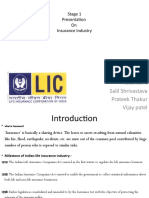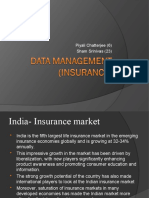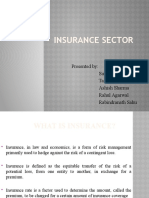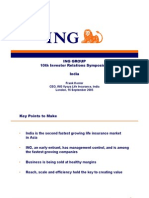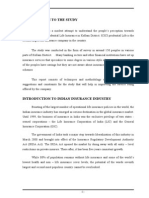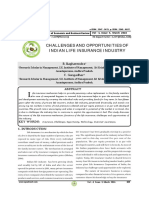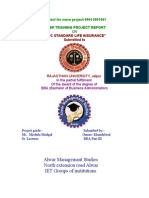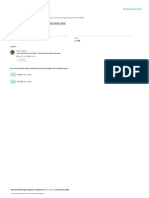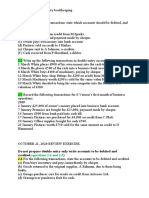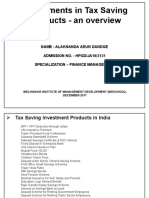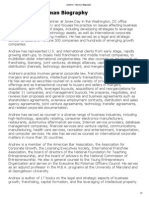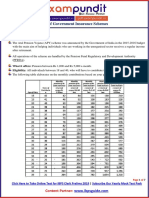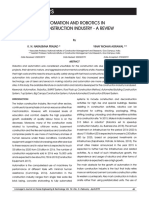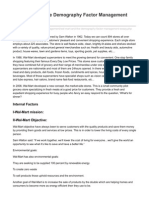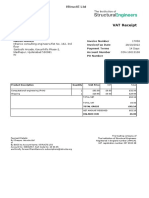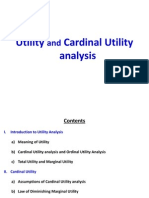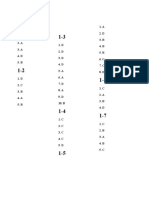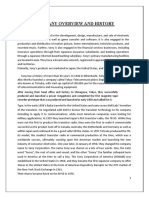OBJECTIVES OF LIC Spread Life Insurance widely and in particular to the rural areas and to the sociallyand economically
backward classes with a view to reaching all insurable persons inthe country and providing them adequate financial cover against death at a reasonablecost. Maximize mobilization of people's savings by making insurance-linked savingsadequately attractive. Bear in mind, in the investment of funds, the primary obligation to its policyholders, whose money it holds in trust, without losing sight of the interestof the community as a whole; the funds to be deployed to the best advantage of the investors as well as the community as a whole, keeping in view national priorities and obligations of attractive return. Conduct business with utmost economy and with the full realization that themoneys belong to the policyholders. Act as trustees of the insured public in their individual and collective capacities. Meet the various life insurance needs of the community that would arise in thechanging social and economic environment. Involve all people working inthe corporation to the' best of their capability infurthering the interests of the insured public by providing efficient service withcourtesy. Promote amongst all agents and employees of the Corporation a sense of participation, pride and job satisfaction through discharge of their duties withdedication towards achievement of Corporate Objective.
GROWTH OF PRIVATE LIFE INSURANCE COMPANIES IN THE LAST 5YEARS The insurance industry recorded a booming growth of 35% in premium income during2004-05 with the 13 private sector players walking away with. An impressive 129%while the Life Insurance Corporation of India recorded a 21% growth.Thus the market share of state behemoths dropped to 78% in 2004 05 from 87% ayear ago.According to ASSOCHAM Eco Pulse (AEP) Study, the industry premium increasedto Rs253.42bn in 2004-05 from Rs187.1bn in 2003-04. The LIC total premium for theyear 2004-05 amounted to Rs197.85bn as against the Rs162.84bn during previousyear.The figures for the first two months of the fiscal 2005-06 also speak of the growingshare of the private insurers. The share of LIC for this period has further come downto 75%, while the private players have grabbed over 24% share."With the huge potential the market has, the Government
�should, more seriously look into increasing the FDI cap in the sector" said Mahendra K. Sanghi, ASSOCHAMPresident.During April-June 2005, the largest private company ICICI Prudential has increasedits share from 6.25% in 2004-05 to 7.68% in current fiscal.The opening up of the sector has given some of the most innovative products like the
from other companies. IT to boost life market growth? THE LIFE Insurance Corporation of India (LIC) has turned to information technologyin a bid to shed its image as a dinosaur among more nimble private sector companies.LIC, India's dominant life insurer, is encouraging policyholders to use its web site to pay premiums and make claims. Last- month, it announced new mobile phone SMS(testing) services to alert policyholders of news about their plans.These moves, unmatched by most of LIC's smaller private sector rivals, are part of aneffort to open new channels to increase the speed and quality of customer service -long seen as LIC's weakness after decades as India's monopoly life insurer. LIC's performance in the year to March 2004 suggests that these efforts are working. It sold27 million new policies generating Rs85.7 billion (US$1.9 billion) in premiumincome - an annual growth of about 11 percent. LIC's deployment of informationtechnology may have helped it maintain its 88 percent market share of premium sales.Yet few believe that technology alone will drive the company's and in effect, theIndian life industry's expansion."Ultimately the growth of life insurance depends on growth of the economy," saidTK. Banerjee, a board member of the Insurance Regulatory Development Authority.India's economic growth rate in March 2004 hit double-digit figures to become Asia'sfastest-growing economy. Most economists forecast growth to stabilize at around 7 percent to 2005. Banerjee said that this climate of rising economic prosperity is
encouraging consumers to think more about insurance. Nonetheless, most life companies believe consumers still need Sanmar: "People stilldon't think that
�insurance is important. Most sales happen after personal interaction."AMP Sanmar, a two-year old joint venture between south.-Indian based conglomerateSanmar and Australia's AMP, has employed some 3,000 sales agents w4o aretargeting small and medium-sized towns that have low penetration rates of lifeinsurance. India's life insurance penetration is less than three percent. "We're focusedon places where there is no other company - not even LIC," Subramaniam said,-remarking that unlike LIC, AMP Sanmar regards the internet and mobile phones aschannels for promotion, not sales. He said that the internet is not widespread as achannel to sell consumer products in India, but Subramaniam has not ruled outdeploying such technology in the future. Whatever the merits of new distributionchannels, the industry fears a decline in sales following new taxes levied on single premium products. Single premium life insurance has been popular in India mainly because guaranteed returns were tax-free. This encouraged policyholders to pay large premiums with minimal risk cover, for payments at maturity that often exceeded thereturns of more sophisticated financial products such as mutual funds. But lastOctober, the government decided to tax premiums that paid above 20 percent of thesum assured. The decision has reduced sales of single premium products, which islikely to restrain the overall growth of India's life industry. The industry regulator hasforecast growth of life premiums to be around 20 percent to March -2004, about thesame level as 1999, down from a burst of sales in 2002 of 43.5 percent. India's lifeinsurers have rallied to persuade the government to rescind the ruling later this year, but any decision must wait for the end of parliamentary elections currently underway.
CURRENT STANDING OF PRIVATE LIFE INSURANCE COMPANIES INURBAN SECTOR Life insurance is possibly the most- retail of all financial services, and is required by people of all segments and in all locations. At a broad level, ICICI Prudential aims tosecure the families of the middle and upper class working people in urban India. Tothis end, they have pursued a pan-India distribution strategy and backed it up with arange of products that meets the needs of a wide range of people, be they from rural or urban areas. Today, they have branches in 74 locations and rural presence in morethan 15 states. Certainly, the majority of the business still comes from urban areassuch as metros and mini-metros. However, they have seen rural business growsignificantly and expect it to continue making greater contribution in the years tocome.
�ROLE OF FOREIGN COMPANIES IN INDIA Government has allowed 26% foreign equity participation in the insurance sector.This has its limitations. While most foreign insurers planning to start their services inIndia were not pleased by this condition, they reluctantly agreed that this wasexpected in an opening economy and this will not change their outlook for India.After all no insurance company can afford to ignore a market of 1bn people. But thefact remains that they: Can not appoint majority directors on the company board; Can not have say in the day to day workings of the company; Can Affect Only Special Resolutions.This cap, however, will have a great impact on the Indian counter part to raise 74% of the funds in their joint venture. To add to this if Indian partners like State bank of India, with over 9000 branches nationwide, will demand premium for their existingdistribution network, we will see the foreign insurance companies demand hefty premiums for bringing in their global expertise and brand. Mr. Vaidya, Chairman of SBI, has recently stated that all it is looking for is a good and reliable partner and thequestion of a hefty premium to be charged to its foreign partner is not significant. Themonolith has finally come to business senses foreign companies are unhappy evenabout laws pertaining to repatriation of funds. The Stipulated investment criteria isalso something that all players in the sector, be it Indian or foreign, are closingwatching.The foreign players are essentially looking to tap their" global expertise in the varietymarkets and use that know-how to work in the Indian scenario. Designing of products,information systems, technical expertise, manpower planning etc is what one expectsthe foreign players to have a say in.
Any venture of the joint kinds needs to be between equals. If this is not there thenthere is every chance that a partner in the venture will feel increasingly uncomfortableand would be looking to call the joint venture off
�FINDINGS QUESTIONNAIRE ANALYSIS Respondents =80 Respondents Responded =60 Response Rate =75% Respondents are taken from private, government and business sectors. 1. According to you, which have played a major role in the field of lifeinsurance companies?
after analyzing this data it is found that from the given three respective level of Pvt.Govt. and Business 10 out of 20 (30%), 13 out of 20 (39%) and 10 out of 20 (30%)are in favour of LIC, while 5 out of 20 (15%), 3 out of 20 (9%) and 5 out of 20 (6%),1 out of 20 (30%) and 1 out of 20 (30%) are in favour of other Pvt. Companies
�2.Which insurance companies have been successful to m a k e s t r o n g p u b l i c base by advertisement?
3.Which insurance company has gained massive public s u p p o r t i n t h e current fiscal year?
�From the above table, it is found that from the given three sector Private, Govt. andBusiness 12 out of 20 (36%), 14 out of 20 (42%), 10 out of 20 (30%), are in thefavour of LIC 3 out of 20 (9%), 2 out of 20 (6%) and 4 out of 20 (12%) are in favour of ICICI, whereas only 2 out of 20 (6%), 2 out of 20 (6%) 1 and out of 20 (3%)favour others company.
4.Do you think insurance policy is in the direction of public welfare?
�The above table shows that from private sector 13 out of 20 (30%) agree and 7 out of 20 (21%) disagree, from govt. sector 16 out of 20 (48%) think it right but 4 out of 20(12%) dont thick it so and from business man 12 out of 20 (36%) are in favour of theabove statement but 8 out of 20 (24%) dont favour it
5. Is retirement bond or pension policy launched by the number of privateplayer as well as public sector Company in the direction of secured old Age ?
�It is obvious from the above table that 15 out of 20 (45%), 18 out of 20 (54%) and 13out of 20 (39%) from the given three think retirement bend or pension policy alegitimate step in the direction of secure old age but 5 out 20 (15%), 2 out of 20 (6%)and 7 out 20 (21%) dont agree with the opinion of the majority class.
6.Do you think that risk coverage factor included in Insurance p o l i c y attracts general public towards the policy?
�From the above table it is found that 12 out of 20 (36%) from Private sector 16 out of 20 (48%). From Govt. sector and 11 out of 20 (33%) thinks risk coverage factor attractive but rest 8 out of 20 (24%), 4 out of 20 (12%) and 9 out 20 (27%) from theabove them sector dont think it so encouraging towards saving trend whereas 3 out of 20 (9%), 2 out of 20 (6%) and 4 out of 20 (12%) dont think it so.
7.What according to you, the term plan that only c o v e r s r i s k a n d d o e s n t cover maturity benefit on survival at the end of the term provides securitycover over policy holders or a smart way of accumulative money frompolicy holders?
�It is obvious from the above data that 11 out of 20 (33%), from the Pvt. Sector, 15 outof 20 (45%) from Govt. sector and 12 out of 20 (36%) think term plan as a securitycover but 9 out of 20 (27%), 5 out of 20 (15%) and 8 out of 20 (24%) from the threerespective group think it as a way of accumulating money insurance company.
8.Do you think that the arrival of so many private c o m p a n i e s i n t h i s insurance sector envisage a lot of choice to policy holder?
�From analyzing the above data it is found that 16 out of 20 (48%) from Pvt. Sector, 18out of 20 (54%) from Govt. sector and 16 out of 20 (48%) think that the arrival of private players envisage a lot of choice to policy holder. But 4 out of 20 (12%), 2 outof 20 (6%) and 4 out of 20 (12%) dont think it so.
9.Do you agree that customer-centricity a n d t r a n s p a r e n c y a r e t h e buzzwords for success in this evolving industry?
�From this above data, it is found the 18 out of 20 (54%) from Pvt. Sector and 20 outof 20 (60%) from Govt. Sector 19 out of 20 (57%) from Business men agree with thisstatement whereas only 2 out of 20 (6%) from Pvt. Sector and 1 out of 20 (3%) fromBusiness men do not agree with this statement.
IMPORTANCE OF JOINT VENTURES HDFC STANDARD LIFE INSURANCE COMPANY LIMITED HDFC Incorporated in 1977 with a share capital of Rs. 10 crores, HDFC has since emergedas the largest residential mortgage finance institution in the country. The corporationhas had a series of share issues raising its capital to Rs. 119 crores. The net worth of the corporation as on March 31, 2000 stood at Rs. 2,096 crores.HDFC operates through 75 locations throughout the country with its
�CorporateHeadquarters in Mumbai, India. HDFC also has an international office in Dubai,V.A.E., with service associates in Kuwait, Oman and Qatar. Standard Life Standard Life is Europe's largest mutual life assurance company. Standard Life, whichhas been in the life insurance business for the past 175 years, is a modern companysurviving quite a few changes since selling its first policy in 1825. The companyexpanded in the 19th century from its original Edinburgh premises, opening offices inother towns and acquiring other similar businesses.Standard Life currently has assets exceeding over 70 billion under its managementand has the distinction of being accorded " AAA " rating consequently for the past sixyears by Standard & Poor. The Joint Venture HDFC Standard Life Insurance Company Limited was one of the first companies to be granted license by the IRDA to operate in life insurance sector. Each of the JV player is highly rated and been conferred with many awards. HDFC is rated 'AAA' by both CRISIL and ICRA. Similarly, Standard Life is rated 'AAA' both by Moody's andStandard and Poors. These reflect the efficiency with which DFC and Standard Lifemanage their asset base of Rs. 15,000 Cr and Rs. 600,000 Cr respectively.HDFC Standard Life Insurance Company Ltd was incorporated on 14th August 2000.HDFC is the majority stakeholder in the insurance JV with 81.4 % stake and StandardLife has a stake of 18.6%. Mr. Deepak Satwalekar is the MD and CEO of the venture.HDFC Standard Life Insurance Products Money Back Endowment Term Assurance Plan Flexible Bond Development Insurance Plan
�ICICI PRUDENTIAL LIFE INSURANCE COMPANYICICI ICICI Ltd. was established in 1955 by the World Bank, the Government of India andthe Indian Industry, to promote industrial development of India by providing projectand corporate finance to Indian industry.Since inception, ICICI has grown from a development bank to a financialconglomerate and has become one of the largest public financial institutions in India.ICICI has thus far financed all the major sectors of the economy, covering 6,848companies and 16,851 projects. As of March 31, 2000, ICICI had disbursed a total of Rs. 1,13,070 crores, since inception. Prudential plc. Prudential policy was founded in 1848. Since then it has grown to become one of thelargest providers of a wide range of savings products for the individual including lifeinsurance, pensions, annuities, unit trusts and personal banking. It has a presence inover 15 countries, and caters to the financial needs of over 10 million customers. Itmanages assets of over US$ 259 billion (Rupees 11, 39,600 crores approx.) as of December 31, 1999.Prudential is the largest life insurance company in the United Kingdom (Source:S&P's UK Life Financial Digest, 1998). Asia has always been an important region for Prudential and it has had a presence in Asia for over 75 years. In fact Credentials firstoverseas operation was in India, way back in 1923 to establish Life and GeneralBranch agencies
The Joint Venture ICICI Prudential Life Insurance Company Limited was incorporated on July 20, 2000.The authorized capital of the company is Rs.2300 Million and the paid up capital isRs. 1500 Million. The Company is a joint venture of ICICI (74%) and Prudential plcUK (26%). The Company was granted Certificate of Registration for carrying out LifeInsurance business, by the Insurance Regulatory andDevelopment Authority on November 24, 2000. It commenced commercial operationson December 19, 2000, becoming one of the first few private sector players to enter the liberalized areICICI Pru Life Insurance Products ICICI Pru Forever Life ICICI Pru Single Premium Bond
�ICICI Save 'n' Protect ICICI Pru CashBack ICICI Pru Life Guard ICICI Pru Assure Investment ICICI Pru Life Link ICICI Pru Reassure BIRLA SUN LIFE INSURANCE COMPANY LIMITEDThe Aditya Birla Group Aditya Birla Group is India's second largest, business house, with a turnover of over $4.75bn and an asset base of$3.8 bn. The Group is a well diversified conglomeratewith 72,000 strong workforce spanning 40 Companies spread across 17 countries.The f l a g s h i p c o mp a n i e s o f t h e G r o u p - Gr a s i m, H i n d a l c o , I n d i a n R a yo n a n d I n d o Gulf - hold leadership positions in their respective areas of business. Sun Life Assurance Sun Life Assurance Co. of Canada, established in 1871, is licensed in Canada, theU.S., the Philippines, Hong Kong, and the U.K. Its major lines of business are lifeinsurance, annuities and mutual funds and investment services. Sun Life's ratingreflects extremely strong diversification of revenues and profitability, outstandingcapitalization, good fundamental earnings, and high-quality investments. In Canada,the company is especially strong. in the corporate life and health insurance andsavings markets. In the U.S., the company is a top 20 player in the variable annuitymarket and a significant force in the upscale individual insurance market. In the U.K.,Sun Life is among top 20 life and health insurers. The Joint Venture Birla Sun Life Insurance Company, the 74: 26 joint ventures between Aditya BirlaGroup and Sun Life financial Services --of Canada, has an equity capital of Rs. 150crore. Birla Sun Life has Mr. Nalli B Javeri as its CEO.A six member Board, with equal representation from each of the JV Companies has been constituted to run the Company. Mr. Donald A. Stewart, Chairman and CEO,Sun Life Financial Services will head the Board. Mr. Kumar Mangalam Birla will bea director on the board. Other directors include Mr. Douglas Henck, Executive VicePresident of Sun Life's Asian operations, Mr. Vijay Singh, Vice President India, SunLife Financial Services, Mr. B. N. Puranmalka, Group Vice-Chairman,
�and Mr. S. K.Mitra, Group Director, Financial Services of the Aditya Birla Group.The area of focus will be the rural segment as the company plans to leverage thenetwork of the Aditya Birla Centre for Community Initiative and Rural Developmentin rural areas. Its multi-channel distribution set up comprises insurance advisors for life and an expert marketing team for group products. Birla Sun Life Insurance Products Money Back Endowment Whole Life Birla Sun Life Term Plant CONCLUSION After overhauling the all situation that boosted a number of Pvt. Companiesassociated with multinational in the Insurance Sector to give befitting competition tothe established behemoth LIC in public sector, we come at the conclusion that :1 ) T h e r e i s v e r y t o u g h c o m p e t i t i o n a m o n g t h e p r i v a t e i n s u r a n c e c o m p a n i e s on the level of new trend of advertising to lull a major part of Customers.2 ) L I C i s not left behind in the present race of advertisement.3)The entry of the Pvt. P l a y e r s i n t h e I n s u r a n c e S e c t o r h a s e x p a n d e d t h e product segment to meet the different level of the requirement of thecustomers. It has brought about greater choice to the customers.4 ) P r i v a t e i n s u r e r s h a v e restricted reach to the customers.5)LIC has vast market and very firm grip on its traditional customers a n d monopoly of life insurance products.6 ) B a n k a s s u r a n c e - t h a t allows life insurers to leverage on the risk p r o d u c t through bank network, was adopted by private players. But LIC was alsonot left behind as picking up majority stake in the corporation Bank andlarge equity stake in the Oriental Bank of Commerce.IRDA is also playing very comprehensive role by regulating norms mandating to private players in this sector, that increases the confidence level of the customers tothe private players. CONCLUSIONS GOT BY THE CONSUMER SURVEY ANALYSIS 1)Now days also Insurance is most popular as more p l a i n p r o t e c t i o n a g a i n s t death and people are unaware about the other aspects of insurance.2 ) A c c o r d i n g t o c u r r e n t s c e n a r i o l i f e a n d m a t e r I n s u r a n c e a r e t h e m a s t popular ones followed by fire
�Insurance.3 ) M a j o r i t y o f p e o p l e c o n s i d e r t h e I n s u r a n c e p r e m i u m p a i d b y t h e m a s reasonable.4 ) O n l y f e w c o u n t e d people are unaware about the entry of private p l a y e r s into. The insurance industry and a very high majority of people supporttheir entry.5 ) B y t h e e n t r y o f p r i v a t e p l a y e r s . C o n s u m e r s a r e e x p e c t i n g t h e p r e m i u m t o down which would be the biggest blessing. RECOMMENDATIONS In the modernized well advanced hi-tech approach to the customer every possiblefacilities and effort to build up the confidence of the rising policy holders towards.Insurance companies, to complete one another nothing is left to recommend. Butsome recommendations that are intensely felt and highly required for insures tosustain in the market. These are as follows:a ) M o r e a n d mo r e t r a n s p a r e n c y s h ou l d b e a s c e r t a i n e d b e t w e e n i n s u r e r s a n d policy holders. b)Particularly, in the emerging boom in the insurance company, every insurancecompany should be customer centered, and well versed in the handling of problem and grievances of the policy holders.c ) Ea c h a n d Ev e r y p r o d uc t l a u n c h e d b y t h e I n s u r a n c e c o mp a n y s h o u l d b e i n favour of increasing need of policy holders.IRDA should be more and more responsible to the insurance sector by determiningsome standard. It should be mandatory to every insurers to make more and moreresponsible and responsive to the policy holders so that comprehensive understandingmay be developed among policy holders. It may be beneficial on both sides. BIBLIOGRAPHYBROCHURES / INFORMATION BOOKLETS Product List L.I.C. L.I.C. Annual Report, 2006 ICICI Annual Report, 2006 HDFC Annual Report, 2006 Malhotra Committee Report on Reforms in the Insurance Sector, 1993. The Insurance Regulatory and Development Authority Bill, 1999. NEWSPAPERS / MAGAZINES
�The Economic Times The Insurance Times Insurance Post BOOKS Dr. Gupta S.P& Dr. Gupta M.P., Business Statistics by Addition 2004, NewDelhi, WEBSITES w.w.w.liclndia.com www.lrdaindia.org.com www.indiainfoline.com





